Community United Methodist
Coeur d'Alene, Idaho
2016
The organ is significantly influenced by its rather extensive history of over 100 years, incorporating vintage sounds blended with new windchests and a modern digital electrical system. The original organ for this Church was built by the Estey Company of Brattleboro, Vermont and installed in the first Sanctuary in downtown Coeur d’Alene. The first major project took place in 1978 with the addition of a new Great division along with a 2M drawknob console; the MP Möller Company of Hagerstown, Maryland completed both additions. When the Church moved to a new location, the organ was brought along and installed in two chambers above the main floor. This new building, the first phase of a long range set of plans was to become the gymnasium with a new Sanctuary planned for the next phase. Unfortunately, these goals were never realized and the Celebration Hall has continued to do double duty for over 40 years.
Our first visit to the Church took place in 1997 as a service client. While the organ was in good playing condition, we noticed some early signs of age related problems to the windchests. The organ utilized windchests from the original Estey; Möller windchests of 1978 and some home built units that accommodated the unit stops. The electrical system was an electro-mechanical unit from 1978. During the next 15 years, the age related problems became more frequent and expensive to repair. Going hand in hand with that was a tonal design that was unable to support and lead congregational singing.
It was at this point the Church approached us about some possible solutions to the status of their organ. After several meetings we were able to develop an overall plan to improve the capabilities of the organ that could be realized with the modest budget that was available to them.
We felt that the existing windchests took up to much floor space, making it impossible to contemplate any meaningful tonal changes or additions. New windchests were built in the Marceau shop that would fit in the limited floor space that also included an angled ceiling. With that change, it opened up the possibility of tonal additions, so desperately needed. The 1978 Möller console was in good condition; the shell was retained with new keyboards, new drawknob units and a Syndyne control system.
A look at the stoplist reveals two distinct Principal choruses on the Great and Swell. The Great retains the Principal stops (Möller @ 8’ & 4’) with the addition of a 2’ Octave and IV Mixture from the Marceau inventory. The Swell retains the 8’ Diapason (Estey), and the existing Great Mixture (Möller- recomposed for greater color and clarity), adding adds a 4’ Geigen Octave (Reuter). Also in the Great, a solo Diapason (Austin) was added for foundational support at 8’ pitch.

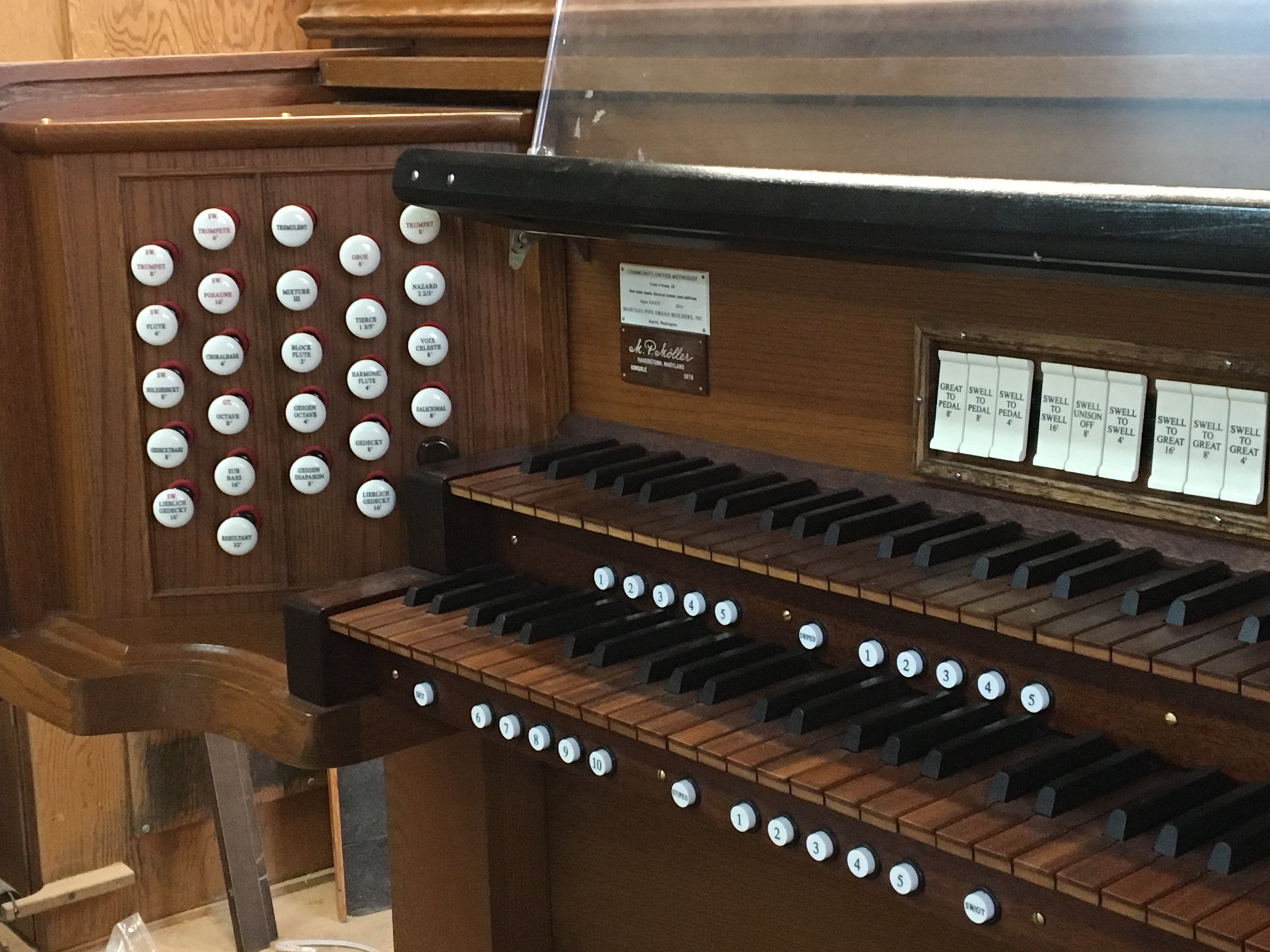
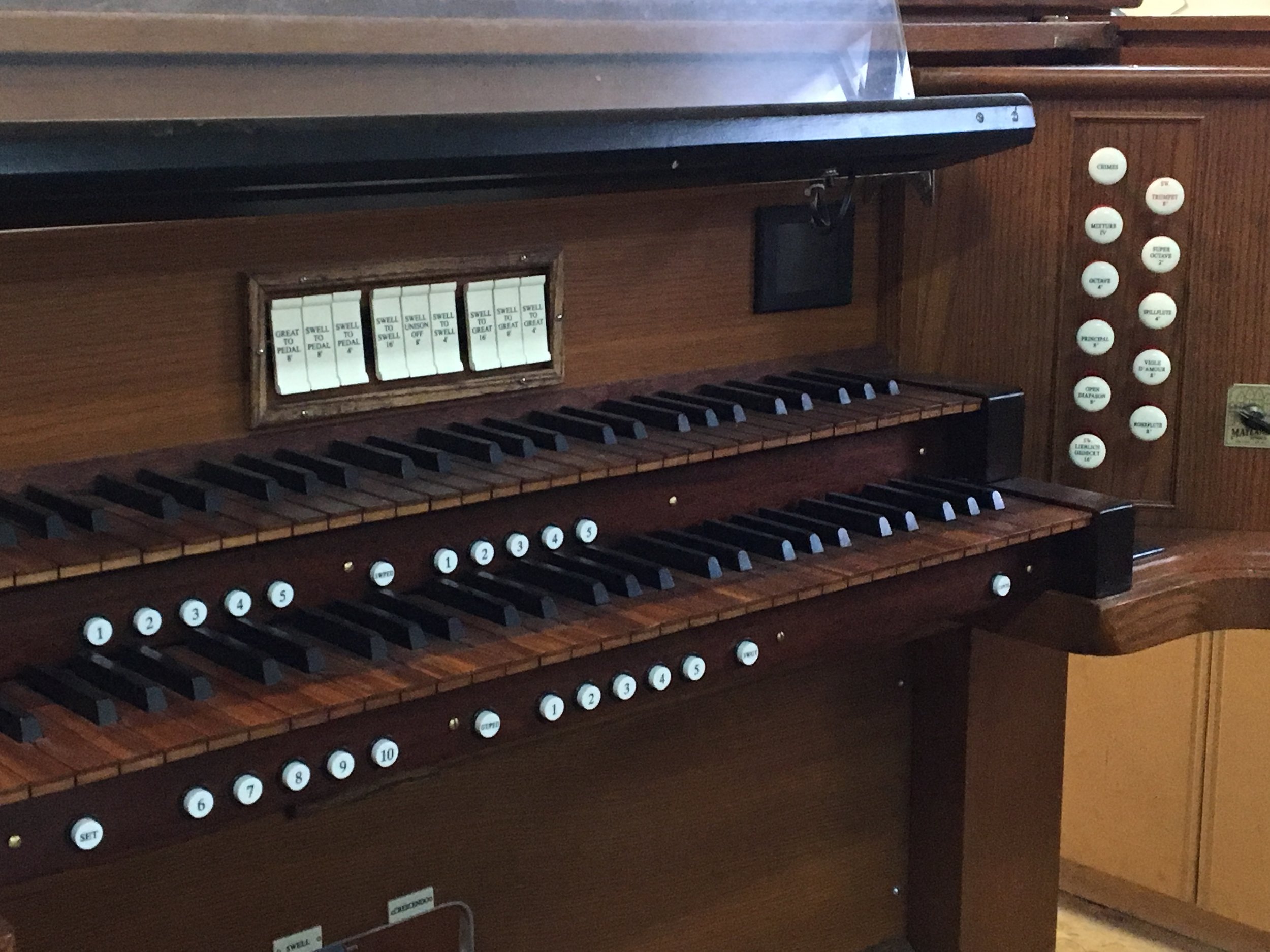

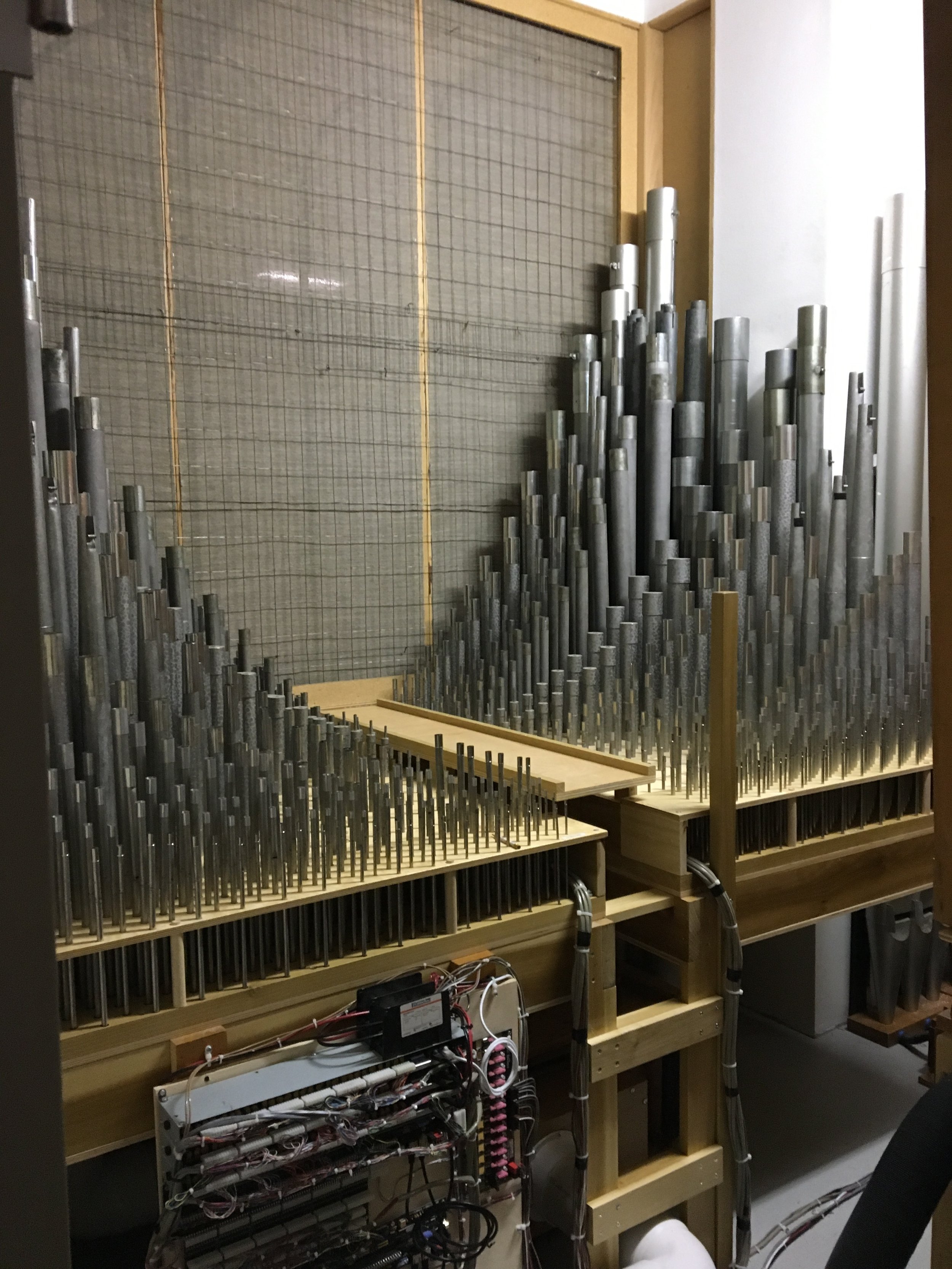
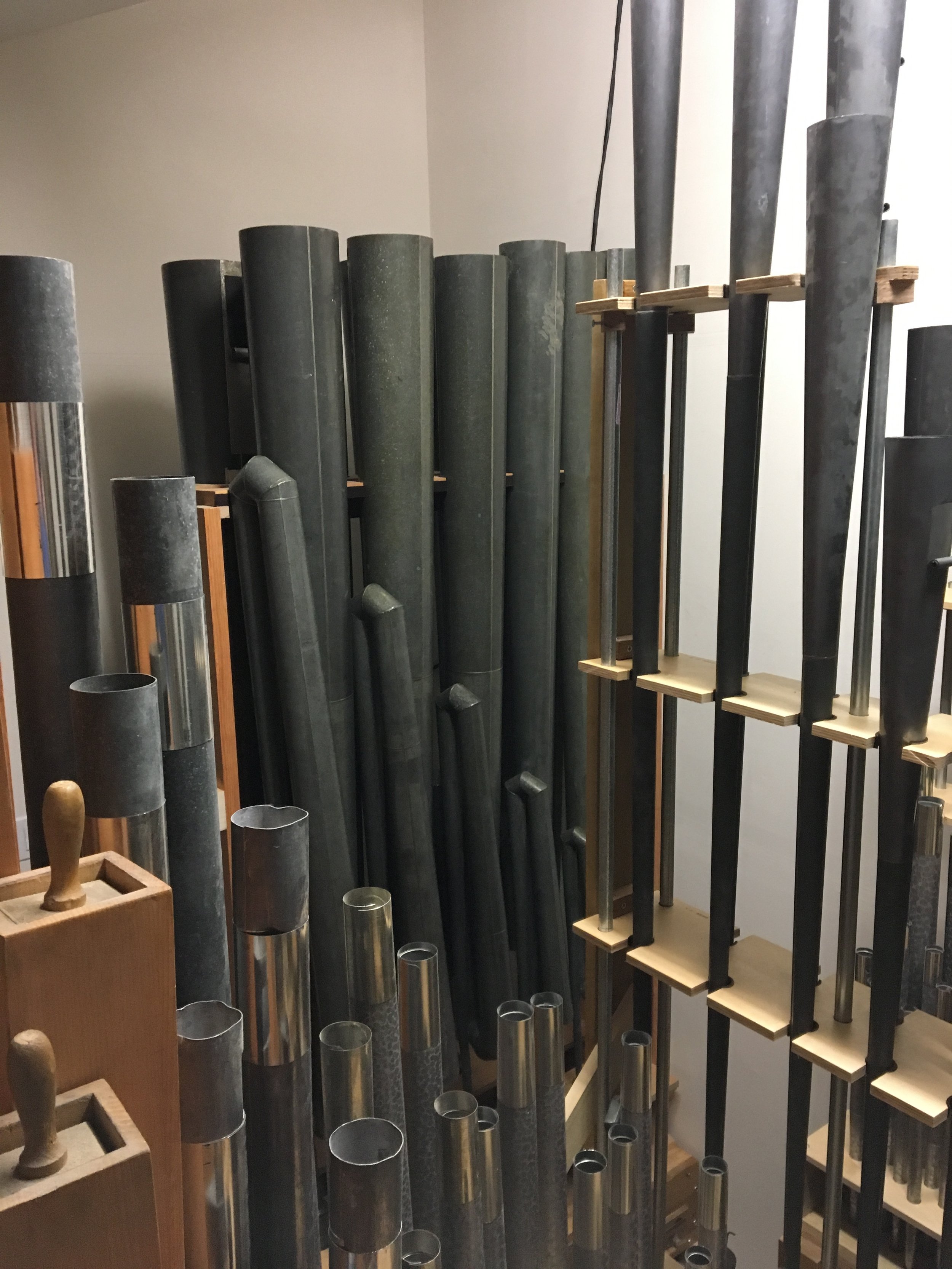
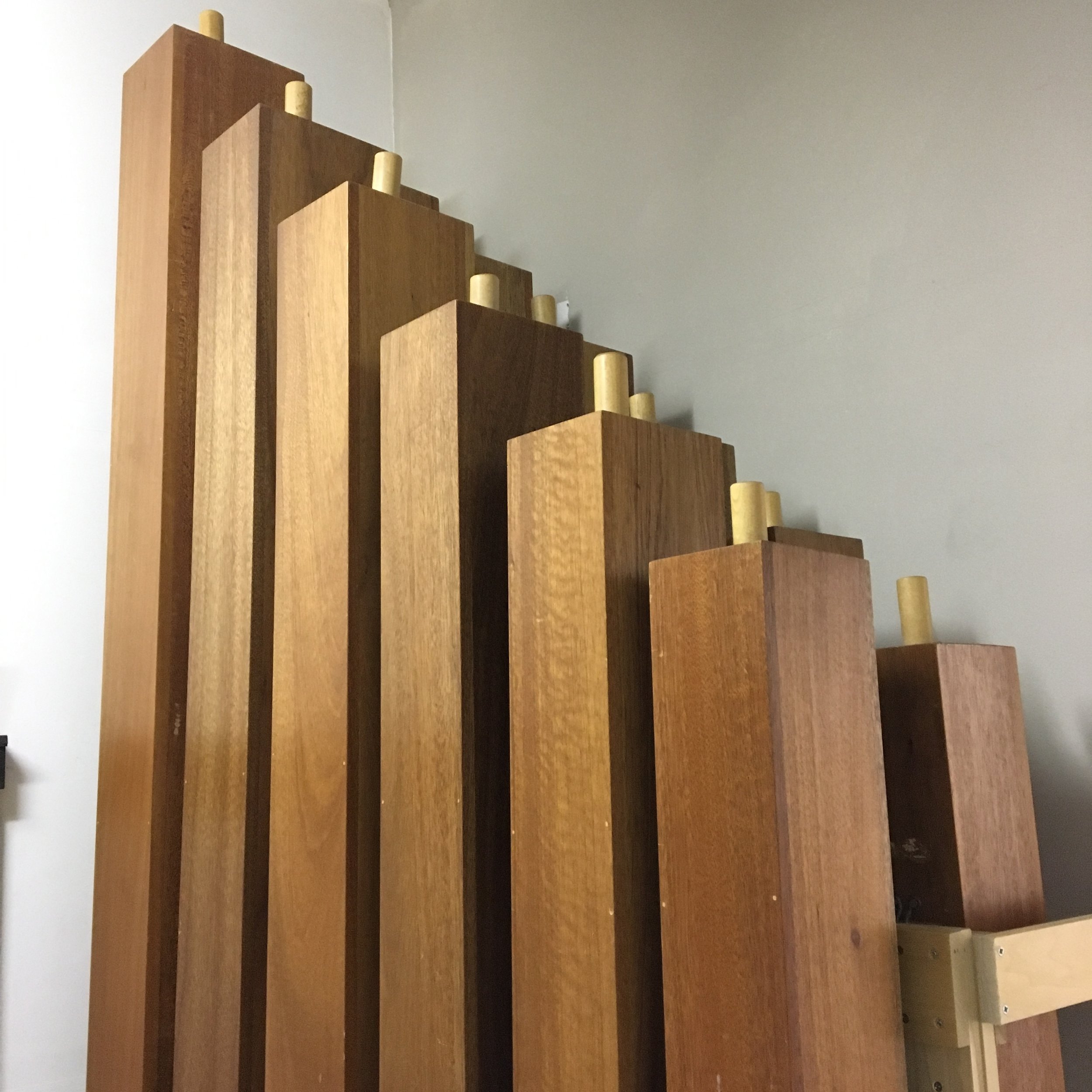
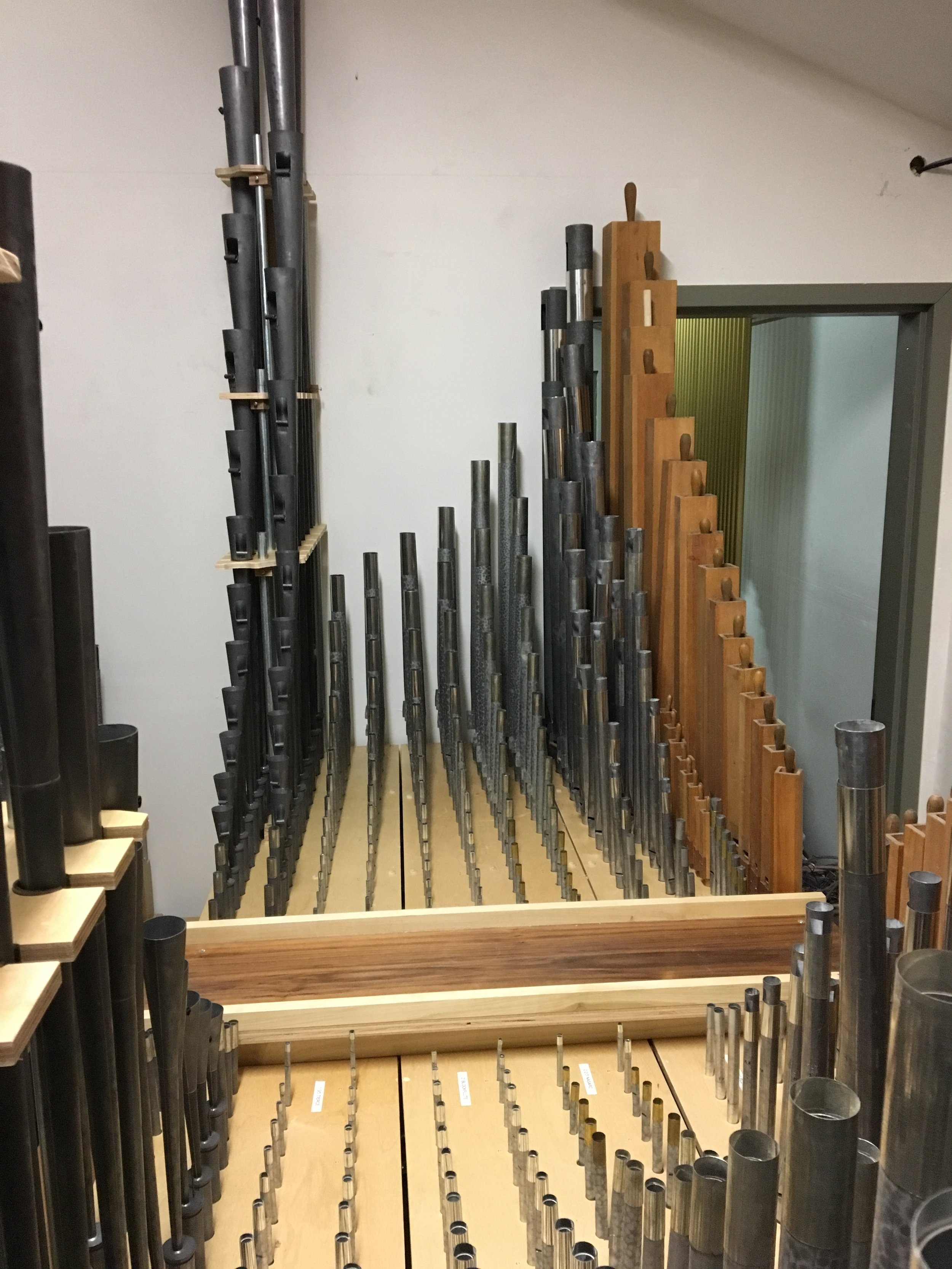
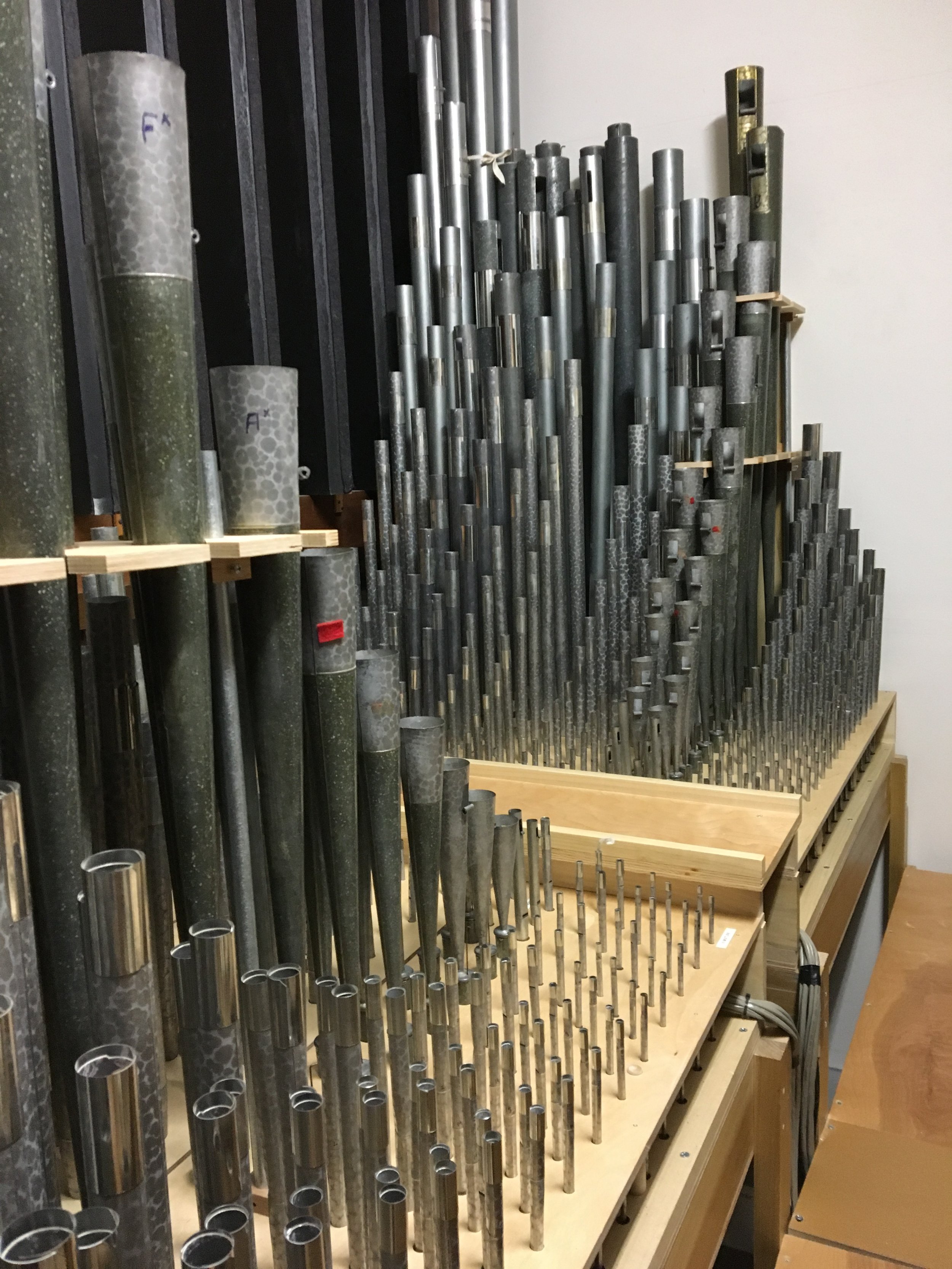

SWELL ORGAN
16' Lieblich Gedeckt
8' Violin Diapason
8' Holzgedeckt
8' Salicional
8' Voix Celeste, TC
4' Principal
4' Harmonic Flute
2 2 /3' Nasard
2' Blockflute
1 3/5' Tierce
2' Mixture III
8' Trumpet
8' Oboe
Tremulant
GREAT ORGAN
16' Lieblich Gedeckt
8' Open Diapason
8' Principal
8' Rohrflute
8' Viol D'Amore
4' Octave
4' Spillflute
2' Super Octave
1 1/3' Mixture IV
8' Trumpet
CHIMES
PEDAL ORGAN
32' Resultant
16' Subbass
16' Lieblich Gedeckt
8' Diapason
8' Gedecktbass
8' Holzgedeckt
4' Choralbass
4' Flute
16' Posaune
8' Trumpet
4' Clarion
Electric key and stop action
STOPS 21
RANKS 26
PIPES 1581